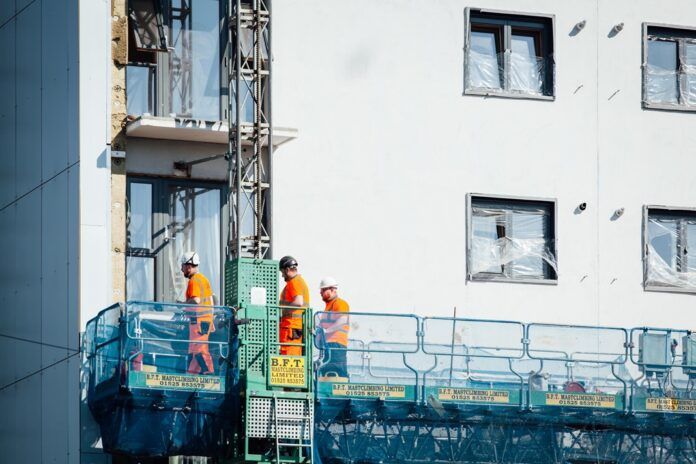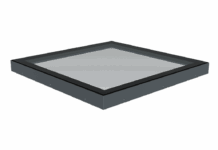An independent testing programme demonstrated that ROCKWOOL’s NyRock Rainscreen 032 can withstand wind conditions equivalent to at least a Category 4 hurricane.
The testing programme is designed to reflect how the product is commonly installed on buildings.
Carried out in accordance with BRE Digest 346 Part 7, the programme simulated 50 years of varying wind pressures. The 125mm NyRock Rainscreen 032 was installed in a range of typical façade build-ups, including, one that incorporated a breather membrane.
Lisa Stephens, product manager at ROCKWOOL UK, said: “Specifiers, contractors and building owners need every confidence that the products they’re using can withstand the weather of the future and have been tested in applications that reflect how they’re commonly specified and installed.
“A breather membrane is important to the testing process, as the wind can infiltrate behind it and exert pressure on the insulation. Despite this, not all rainscreen insulation wind load tests include a breather membrane.
“By testing our rainscreen insulation in a build-up that more closely replicates a façade’s design, architects and specifiers can make informed decisions, knowing the findings are rooted in common build-up scenarios.”
The ROCKWOOL testing programme examined the product in two common façade build-ups: a steel frame masonry façade comprising 125mm NyRock Rainscreen 032 installed in ACS channel without additional mechanical fixings, and a steel frame cladded façade with 125mm NyRock Rainscreen 032 installed with 50mm EJOT fixings.
Both tests concluded that NyRock Rainscreen 032 can withstand a minimum of Category 4 hurricane conditions.
The 50mm fixing test was completed and recognised that space restrictions sometimes mean 70mm fixings cannot always be used. The testing confirmed that smaller 50mm fixings, instead of 70mm, are sufficient to endure Category 4 hurricane wind pressure. Similarly, in masonry façade build-ups, ROCKWOOL said the NyRock Rainscreen 032 demonstrated its strength without the need for additional mechanical fixings.
Lisa added: “In practical terms, this means specifiers and contractors can save on fixing costs with the knowledge that a more complete build-up has been independently assessed for wind-load.”




